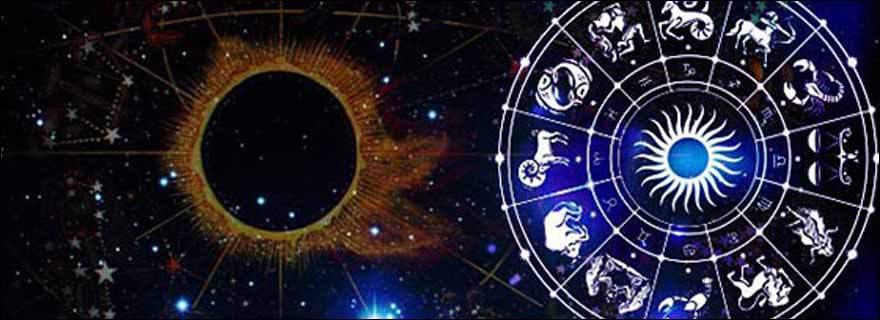Why Constellations (Nakshatras) are Important in Astrology?
Constellations or Nakshatras are further divisions of the zodiac signs. The characteristics of a sign cannot be taken as the same throughout its spread of 30 degrees because the constellations add their colours.

The 360 zodiac is divided into twelve parts of 300 each and these are called zodiac-signs or just signs. Each sign is governed by a planet out of the seven planets as listed in the table below:
| Zodiac Sign | Governing Planet |
|---|---|
| Aries | Mars |
| Taurus | Venus |
| Gemini | Mercury |
| Cancer | Moon |
| Leo | Sun |
| Virgo | Mercury |
| Libra | Venus |
| Scorpio | Mars |
| Sagittarius | Jupiter |
| Capricorn | Saturn |
| Aquarius | Saturn |
| Pisces | Jupiter |
You will observe from this table that except Sun and Moon each planet governs two zodiac signs.
The non-physical planets viz. Rahu (North node of Moon) and Ketu (South node of Moon) have no place in this table in other words they do not govern any sign.
Constellations (Nakshatras) …
There is another division of the same zodiac into 27 equal parts. The starting point of both these divisions is the same as 0o Aries. These 27 parts are called constellations. Each constellation is of 13 degrees 20 minutes, which means that there are two and a quarter constellations in one sign.
The Constellations are also known as Asterisms, Lunar Mansions or Stars. The name in Hindi is Nakshatra which is made of two words viz. ‘Naksha’ which means ‘The Map’ and ‘Tara’ which means ‘Stars’ so when combined it means, ‘The Map of Stars’.
A group of three constellations is governed by one of the nine planets. Here even the non-physical planets or nodes of the Moon viz. Rahu and Ketu are also assigned lordship of certain constellations.
The table below lists all the 27 constellations, the sign in which it falls, sign lord and constellation lord.
| Constellation (Nakshatra) | Sign in which it Falls |
Planet Governing the Sign | Planet Governing the Constellation |
|---|---|---|---|
| Ashvini | Aries | Mars | Ketu |
| Bharani | Aries, | Mars | Venus |
| Kritika | Aries,Taurus | Mars,Venus | Sun |
| Rohini | Taurus | Venus | Moon |
| Mrigshira | Taurus,Gemini | Venus,Mercury | Mars |
| Ardra | Gemini | Mercury | Rahu |
| Punarvasu | Gemini,Cancer | Mercury, Moon | Jupiter |
| Pushya | Cancer | Moon | Saturn |
| Ashlesha | Cancer | Moon | Mercury |
| Magha | Leo | Sun | Ketu |
| Poorva-Phalguni | Leo | Sun | Venus |
| Utra-phalguni | Leo,Virgo | Sun, Mercury | Sun |
| Hasta | Virgo | Mercury | Moon |
| Chitra | Virgo,Libra | Mercury,Venus | Mars |
| Swati | Libra | Venus | Rahu |
| Vishakha | Libra,Scorpio | Venus,Mars | Jupiter |
| Anuradha | Scorpio | Mars | Saturn |
| Jyeshtha | Scorpio | Mars | Mercury |
| Mula | Sagittarius | Jupiter | Ketu |
| Poorva-ashada | Sagittarius | Jupiter | Venus |
| Utra-ashada | Sagittarius,Capricorn | Jupiter,Saturn | Sun |
| Shravan | Capricorn | Saturn | Moon |
| Dhanishtha | Capricorn,Aquarius | Saturn,Saturn | Mars |
| Shatbhisha | Aquarius | Saturn | Rahu |
| Poorva-Bhadrapad | Aquarius,Pisces | Saturn, Jupiter | Jupiter |
| Utra-Bhadrapad | Pisces | Jupiter | Saturn |
| Revati | Pisces | Jupiter | Mercury |
Astrological Importance of constellations …
Thus, we see that it is not only the lord of a sign that exerts its influence throughout that sign. In addition to the lord of a sign, another planet called constellation lord depending upon the particular part of the sign falling in a constellation also exerts its own influence.
So in addition to the sign the constellationis also important and practice reveals that constellation being a finer part of the sign affects more powerfully.
Just in order to illustrate this point suppose in a chart the natal Moon falls in the sign Libra then predicting Moon’s behaviour just as per the sign would give wrong results.
The sign Libra contains three constellations viz. Chitra, Swati and Vishakha and these being ruled by Mars, Rahu and Jupiter respectively exhibit different characteristics. Now depending upon in which of these the Moon is posited its behaviour will differ vastly.
Which Constellations should be considered? …
In general as you consider the sign wise position of a planet in a birth chart also give attention to the constellation in which that planet falls. That planet during its planetary periods called Dashas will more prominently give results pertaining to the planet governing the constellation in which that planet falls.
In addition to this the following need attention during analysis:
(1) The constellation in which the ascendant falls.
(2) The constellation in which natal Moon falls.
(3) The constellation in which the cusp (middle point) of a house (under consideration) falls.
Thus giving due consideration to the constellations in a chart will enhance the results of your analysis.
Article by: Jyotirvid Pawan Kumar
Latest Articles
- How Each Zodiac Sign Manages Money: Traits, Habits, and Planetary Influence
- Zodiac Signs and Money Management
- Transit of Mercury into Leo on 27 June 2025
- Transit of Mercury into Cancer – Effects and Remedies
- Sun Transit in Gemini 2025 – Effects on All Zodiac Signs
- Jupiter is combust in the Gemini sign (9th June, 2025)
- Mercury’s transit in Gemini (6th June, 2025)
- Transit of Venus in Aries (31 May, 2025)
© 2025 by Truthstar Future Vision Pvt Ltd All Right Reserved



